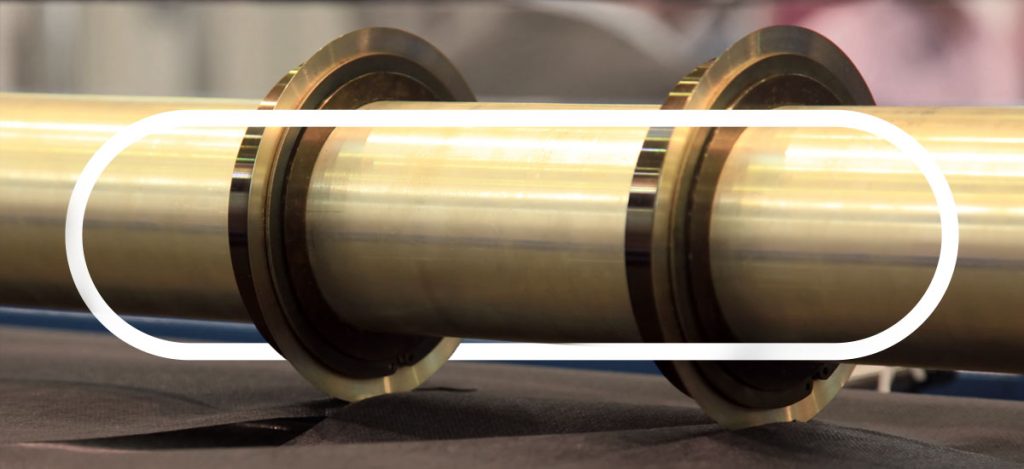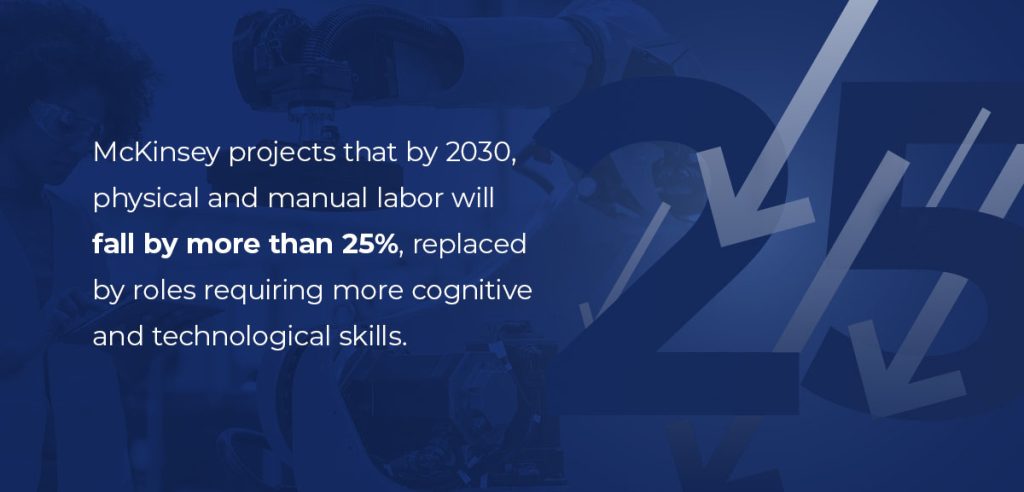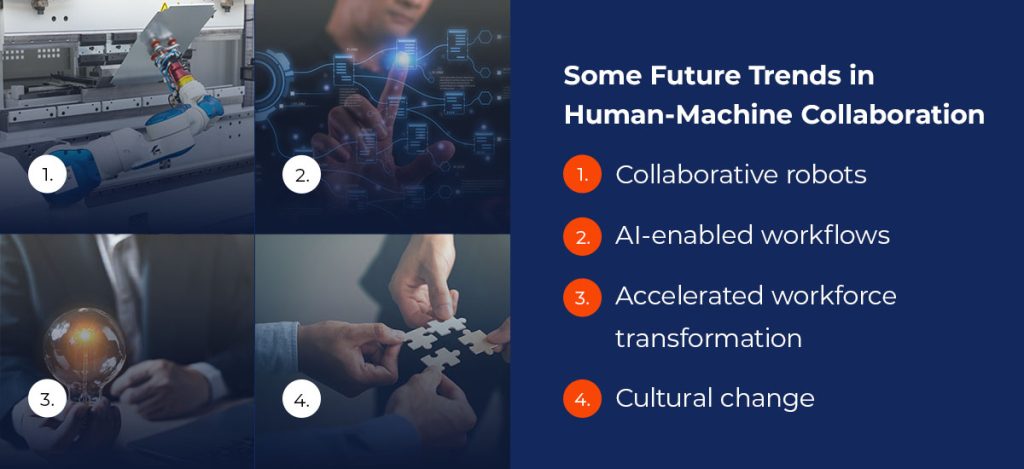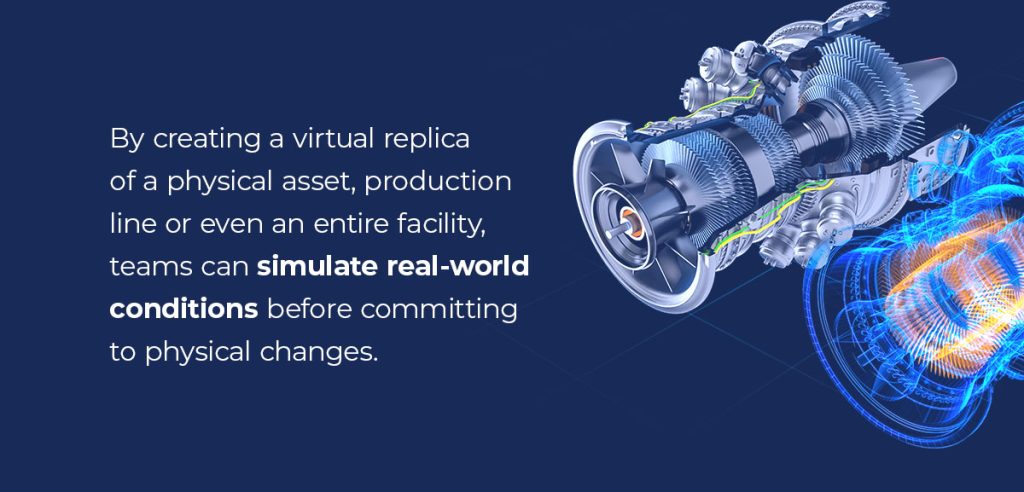
Industrial manufacturing is undergoing a profound transformation. Economic pressures, rapid technological advancements, operational complexity and evolving customer expectations are reshaping production strategies. From automation and artificial intelligence to workforce shifts and cybersecurity investments, manufacturers are preparing for a future that demands agility and innovation. By studying what’s trending in manufacturing, decision-makers can position themselves to thrive in 2026 and beyond.
Top 12 Future Trends in Industrial Manufacturing
The following trends reveal what is shaping the industrial manufacturing industry today and in the near future. Failure to keep up with these developments could lead to loss of your competitive edge and diminished customer satisfaction:
1. Supply Chain Resilience
The past few years have exposed critical vulnerabilities in global supply chains. Volatility, geopolitical shifts and natural disruptions such as the 2020 COVID-19 pandemic have pushed companies to reassess sourcing strategies. As a result, manufacturers are taking deliberate steps to enhance resilience by balancing cost, control and continuity across regions in numerous ways:
- Diversification of suppliers: Expanding the supplier base reduces vulnerability to regional or single-source disruptions.
- Nearshoring and reshoring: Bringing production closer to end markets helps shorten lead times, improve visibility, and lower geopolitical and transportation risks.
- Digital supply chain management: AI-powered tools and blockchain solutions offer transparency, streamline logistics and may predict potential disruptions.
- Sustainability integration: Building resilient supply chains now includes evaluating environmental impact, from reducing empty miles in trucking to aligning with green suppliers.
These trends show that agility and risk management are becoming more critical than lowest-cost sourcing alone. Companies that build resilient, transparent supply chains will be better positioned to maintain production schedules, protect margins, mitigate risks and respond quickly to changes in market demand.
2. Automation and Smart Manufacturing
Automation has moved beyond isolated equipment upgrades into fully integrated smart factories. Modern factories are rapidly evolving into interconnected ecosystems where machines, sensors and AI-powered analytics work in sync to streamline workflows, reduce downtime, optimize energy use and accelerate time-to-market.
Manufacturers are also investing in scalable systems that can support predictive maintenance and self-correcting workflows. These technologies enhance throughput and consistency, helping organizations respond to tighter delivery windows and fluctuating demand. With 5G connectivity, edge computing and advanced control systems becoming more accessible, smart manufacturing is no longer optional, but the backbone of future-ready operations.
3. Artificial Intelligence (AI) and Machine Learning (ML)
Artificial intelligence and machine learning are quickly becoming a driver of competitive advantage. According to the National Association of Manufacturers (NAM), nearly half of all surveyed leaders plan to integrate AI and ML across operations by 2026. These technologies are shaping the latest trends in manufacturing in several ways:
- Real-time production agility: Generative AI and cognitive automation enable immediate adjustments to production processes.
- Predictive analytics: Machine learning supports predictive analytics, allowing manufacturers to forecast demand, optimize energy use and detect system inefficiencies.
- Unprecedented workforce support: With the growing use of agentic workflows, manufacturers are deploying AI co-pilots to assist employees in tasks ranging from inventory forecasting to machine diagnostics.
- Optimized production: Machine learning models help analyze production data, predict failures before they occur, and optimize everything from material flow to workforce scheduling and supply chain optimization.
- Accelerated development cycles: Beyond the factory floor, generative AI speeds up research and development (R&D) cycles by automating documentation, supporting design iterations and helping teams model new business cases.

McKinsey projects that by 2030, physical and manual labor will fall by more than 25%, replaced by roles requiring more cognitive and technological skills. Manufacturers that invest now in AI infrastructure, including scalable cloud environments and robust data governance, will position themselves ahead of competitors and benefit from significant efficiency gains.
4. Cybersecurity in Industrial Manufacturing
As manufacturing systems become more digitally integrated, they become more vulnerable to disruption due to the expanded attack surface. The manufacturing sector now ranks as one of the top targets for cyberattacks globally. Consequently, cybersecurity has shifted from an IT concern to a board-level priority, and industrial leaders are responding with layered, proactive defense strategies.
For instance, companies are increasingly deploying zero-trust architecture, behavioral threat detection and AI-enhanced monitoring tools to secure operational technology (OT) networks. These systems protect critical infrastructure without disrupting uptime and help shield both proprietary data and real-time production information from malicious actors.
More manufacturers are also moving beyond reactive policies and investing in integrated cyber-resilience tools that align with business continuity plans. These include investments in cyber insurance, employee training and OT-specific risk assessments to prevent costly downtime. This heightened focus on security is one of the latest trends in manufacturing, signaling that digital resilience is just as important as physical production capacity in the future of manufacturing.
5. Talent Acquisition and Retention
According to NAM, over 65% of U.S. manufacturing firms report difficulty hiring and retaining qualified personnel as their leading challenge. With automation and digitization on the rise, demand for tech-savvy employees is outpacing supply. Manufacturers are adapting by:
- Reskilling and upskilling: Investments in training programs allow existing employees to adapt to digital tools, bridging the skills gap left by automation and AI adoption.
- Knowledge transfer: Long-term employees and retirees hold critical institutional knowledge. Structured mentorship programs help pass on this expertise to younger workers.
- Diversity and inclusion initiatives: Broadening recruitment to include women, veterans and underrepresented groups expands the talent pool while strengthening organizational culture.
- Enhanced workplace benefits: Manufacturers competing for talent focus on competitive benefits such as improved healthcare coverage, flexible scheduling, financial wellness programs and upward mobility.
6. Data-Driven Decision-Making
Modern manufacturing thrives on actionable insights. Cloud computing and integrated Industrial Internet of Things (IIoT) sensors and devices now generate immense volumes of production data. However, how this data is structured and acted upon determines its value.
Trends in the manufacturing industry imply that data has moved from being a by-product of production to the core driver of competitive advantage. As production systems become more connected, decision-making shifts from gut instinct to real-time analytics. Companies are building flexible, scalable data infrastructures to enable advanced analytics, predictive maintenance, quality control and interoperability across functions. Organizations are also investing in data governance strategies to standardize collection and analysis, improving transparency and accuracy across the enterprise.
7. Human-Machine Collaboration and Workforce Transformation
The rise of robotics and automation has sparked a new era of collaboration between people and machines. Rather than entirely replacing human labor, modern production systems integrate workers and automated systems into shared workflows. Some of the future trends in the manufacturing industry with respect to human-machine collaboration include:

- Collaborative robotics (cobots): These systems assist employees in repetitive or hazardous tasks, reducing injury risks and enabling staff to focus on higher-value work.
- AI-enabled workflows: Instead of replacing workers, AI systems integrate into job functions, offering recommendations, simulations and process adjustments in real time.
- Accelerated workforce transformation: As roles evolve, soft skills such as problem-solving, adaptability, critical thinking and communication are as important as technical expertise.
- Cultural change: Leaders are reframing automation not as displacement but as augmentation, emphasizing how machine support creates opportunities for innovation and career advancement.
Balancing human creativity and machine precision is shaping future trends in the manufacturing industry, allowing businesses to achieve previously unattainable levels of efficiency and adaptability.
8. Sustainability and Green Manufacturing
Sustainability has moved from a corporate talking point to a defining driver of competitive advantage. With global manufacturing accounting for roughly one-fifth of worldwide emissions, companies prioritize carbon reduction and energy-efficient processes. Some of the latest manufacturing trends include:
- Ambitious carbon reduction goals: Many organizations are increasingly committing to reducing their Scope 1, 2 and 3 emissions through energy optimization and renewable power adoption.
- Circular economy models: Recycling, reusing materials and designing for end-of-life are gaining traction as manufacturers rethink the full life cycle of products.
- Regulatory compliance: Government policies such as the Inflation Reduction Act are accelerating investment in renewable energy projects, offering incentives for solar adoption, energy storage and emissions tracking.
- Effective market differentiation: Leading manufacturers now see sustainability as a differentiator that attracts customers, investors and top talent.
As the future of manufacturing unfolds, organizations that embed sustainability into their core operations are poised to gain regulatory clearance and long-term customer loyalty and market resilience.
9. Additive Manufacturing
Additive manufacturing is evolving from a prototyping tool into a mainstream production method. This technology offers numerous benefits that align with broader industrial manufacturing trends in 2026 and beyond, including:
- Rapid prototyping: Through additive manufacturing, engineers can move from concept to physical model in hours, reducing development cycles and enabling faster product validation.
- Mass customization: With 3D printing, manufacturers can produce tailored components to meet customer-specific requirements without the high costs and lead times associated with traditional methods.
- On-demand production: Companies and technicians can manufacture spare parts and replacement components as needed, lowering inventory costs and minimizing downtime.
- Enhanced material innovation: Advanced polymers, composites, bio-based resins and metal powders are expanding the range of industries that benefit from additive techniques, from aerospace to medical devices.
- Improved sustainability: Additive manufacturing supports sustainability goals by minimizing material waste and reducing transportation emissions.
As one of the most transformative trends in the manufacturing industry, additive manufacturing is helping companies increase agility and improve responsiveness to customer needs while reducing costs tied to supply chains and warehousing.

Digital twins are revolutionizing the way manufacturers design, test and refine products. By creating a virtual replica of a physical asset, production line or even an entire facility, teams can simulate real-world conditions before committing to physical changes. This approach reduces prototyping costs, speeds up development cycles, maximizes equipment uptime and improves quality outcomes in numerous ways:
- Virtual prototyping: Companies can simulate stress, wear and efficiency under varied conditions without halting production lines, which reduces time and costs.
- Process optimization: Digital twins enable managers to test scenarios, adjust workflows and predict maintenance needs, keeping operations running at peak efficiency.
- Product innovation: By capturing and analyzing data from real-world usage, digital twins allow continuous improvement and design refinements for the next generation of products.
- Integration with IoT and AI: Connected devices feed live data into digital models, strengthening their accuracy and enabling smarter, real-time decision-making.
As more manufacturers expand their digital infrastructure, digital twins are poised to be a key industry trend in industrial manufacturing in 2026 and beyond.
11. Shifting Focus From B2B to B2C
Many manufacturers are looking beyond traditional wholesale channels and exploring direct-to-consumer opportunities. This shift is one of the defining industrial manufacturing industry trends reshaping market strategies, and it is being enabled by:
- Efficient direct-to-consumer channels: E-commerce platforms and digital storefronts allow manufacturers to bypass traditional distributors, creating new revenue streams.
- Increased personalization opportunities: By connecting directly with consumers, manufacturers can offer tailored products and align with the broader demand for customization.
- Stronger customer relationships: B2C models enable direct feedback loops, helping organizations refine products and respond quickly to shifting preferences.
- Better brand visibility and loyalty: Selling directly builds brand recognition and fosters customer loyalty that was once limited to retail intermediaries.
Companies that can keep up with this future trend in the manufacturing industry may realize significant opportunities for higher margins, richer customer data and faster feedback loops.
12. Changing Geopolitical Landscapes
Geopolitical dynamics will continue shaping industrial manufacturing trends in 2026 and beyond. Some of the most impactful developments influencing decisions about sourcing, production and compliance include:
- Trade policy shifts: Tariff adjustments and evolving trade agreements directly affect material costs, availability and sourcing strategies.
- Regional stability concerns: Conflicts, sanctions and resource competition can disrupt supply chains and demand rapid adaptability.
- National investment policies: Legislation like the Creating Helpful Incentives to Produce Semiconductors and Science Act of 2022 (the “CHIPS and Science Act”) is set to drive domestic capabilities in critical technologies.
- Energy independence: Nations are investing in renewable and local energy resources to reduce dependence on volatile international markets.
Geopolitical considerations are increasingly embedded in business strategy, making them one of the most critical future trends in the manufacturing industry.

Future-Proof Your Manufacturing Operations With Intertech Precision
The top industrial manufacturing trends in 2026 highlight a sector in transformation. From automation and AI and sustainability to additive manufacturing and resilient supply chains, the latest trends in manufacturing emphasize adaptability and innovation. Forward-looking organizations invest in data-driven operations, human-machine collaboration and advanced technologies to remain competitive in the future of manufacturing.
Intertech Precision has helped industrial manufacturers evolve in an ever-changing landscape for decades. With expertise in precision blades, pneumatic knife holders and cutting-edge slitting services, we support manufacturers across paper, plastics, textiles, film, foil, nonwovens, rubber and beyond. Our world-class consulting services, custom blade design and sharpening services align with today’s industrial manufacturing industry trends by helping customers improve quality and increase uptime.
As a woman-owned business with deep expertise and a global footprint, we equip your production line with the tools and insight to keep moving safely and competitively. Request a free quote today to explore how Intertech Precision can help you strengthen operations and stay competitive in this rapidly evolving landscape.
